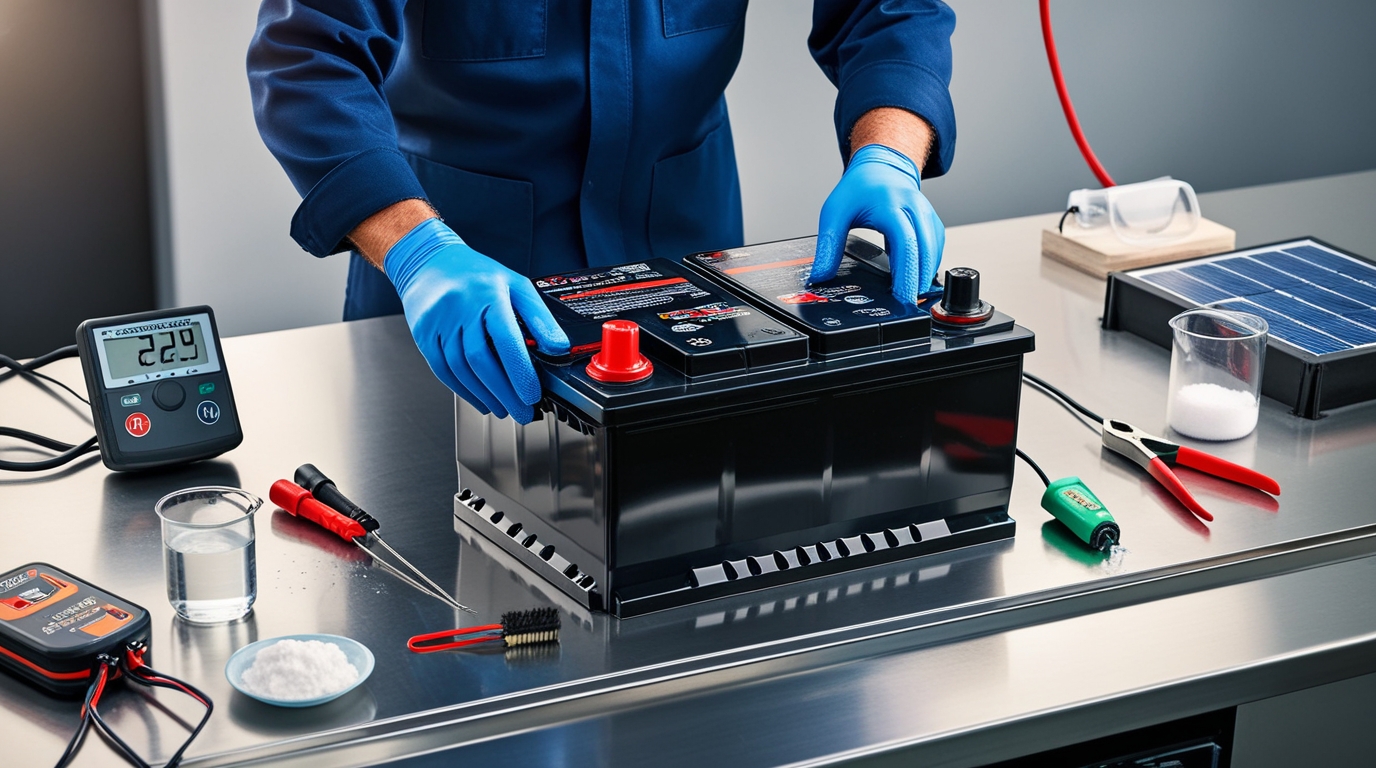In today’s blog post, I am going to talk about how to recondition batteries at home and its many benefits.
Last week, I got a frantic call from my neighbor Sarah. Her car wouldn’t start, and she was already looking up prices for a new battery – around $200!
I smiled and told her to hold off on that purchase. Within two days, her car was running perfectly, and her wallet remained intact.
The secret? Battery reconditioning.
Battery reconditioning is becoming increasingly popular among DIY enthusiasts and environmentally conscious individuals – and for good reason.
With new car batteries costing upwards of $200 and specialized batteries for renewable energy systems reaching into the thousands, the ability to recondition batteries at home can lead to substantial savings.
More importantly, it helps reduce the environmental impact of battery disposal, as research shows that approximately 80% of discarded batteries could potentially be restored to functional condition.
DIY Battery Reconditioning in a Flash
"To recondition batteries at home, first test the battery's voltage with a digital voltmeter - if it reads between 10.5 and 12 volts, it's suitable for reconditioning.
While wearing safety gear (goggles and chemical-resistant gloves), carefully remove the old battery acid, clean the terminals with a baking soda paste, and then fill the cells with a new solution made from 8 ounces of Epsom salt per quart of distilled water.
Finally, charge the battery slowly at 2 amps for 24-36 hours.
Alternatively, you can connect the battery to a 40-watt solar panel for 1-2 weeks for a gentler reconditioning process. This method typically restores batteries to 70-90% of their original capacity."
Understanding Battery Reconditioning Basics

At its core, battery reconditioning is a process that restores a battery’s ability to hold and deliver charge by addressing common issues like sulfation and electrolyte depletion.
The process works particularly well with lead-acid batteries, which are commonly found in vehicles, solar power systems, and backup power supplies.
The science behind reconditioning is straightforward: over time, lead-sulfate crystals build up on battery plates, reducing the battery’s capacity.
Reconditioning breaks down these crystals and restores proper electrolyte levels, effectively rejuvenating the battery’s functionality.
Essential Tools for Battery Reconditioning
A proper battery reconditioning setup requires some basic equipment:
- A digital voltmeter is essential for testing battery condition and monitoring progress.
- Safety equipment, including chemical-resistant gloves and protective eyewear, typically costs around $20 total.
- You’ll also need distilled water and Epsom salt for creating the reconditioning solution.
- A 40-watt solar panel can be a valuable investment, though it’s not required for basic reconditioning work.
Safety Considerations for Battery Reconditioning
DIY battery reconditioning requires careful attention to safety due to the chemicals involved, particularly when working with lead-acid batteries.
Sulfuric acid inside these batteries is highly corrosive and can cause severe burns if it contacts skin, eyes, or clothing. Even a small splash can result in serious injury.
When working with these batteries, take extra precautions to protect yourself from potential accidents. This means wearing protective gloves and goggles and ensuring that all skin is covered to minimize exposure.
The acid also releases fumes, which can be harmful if inhaled, causing respiratory irritation or worse with prolonged exposure.
Performing this work in a well-ventilated space — preferably outdoors or in an open garage — is essential to disperse these fumes safely.
Even if the fumes seem minimal, they can build up over time, especially in enclosed areas.
Additionally, it’s smart to keep baking soda close at hand. This common household item is excellent for neutralizing any acid spills, stopping a hazardous situation before it escalates.
Safety gear should not be seen as optional. A sturdy pair of gloves, goggles, a mask, and protective clothing are essential for anyone handling battery reconditioning tasks.
Think of it as your frontline defense against the risks involved. Proper preparation not only protects you physically but also allows you to work with greater confidence and focus, knowing that you’ve taken the necessary steps to ensure a safe environment.
The Battery Reconditioning Process
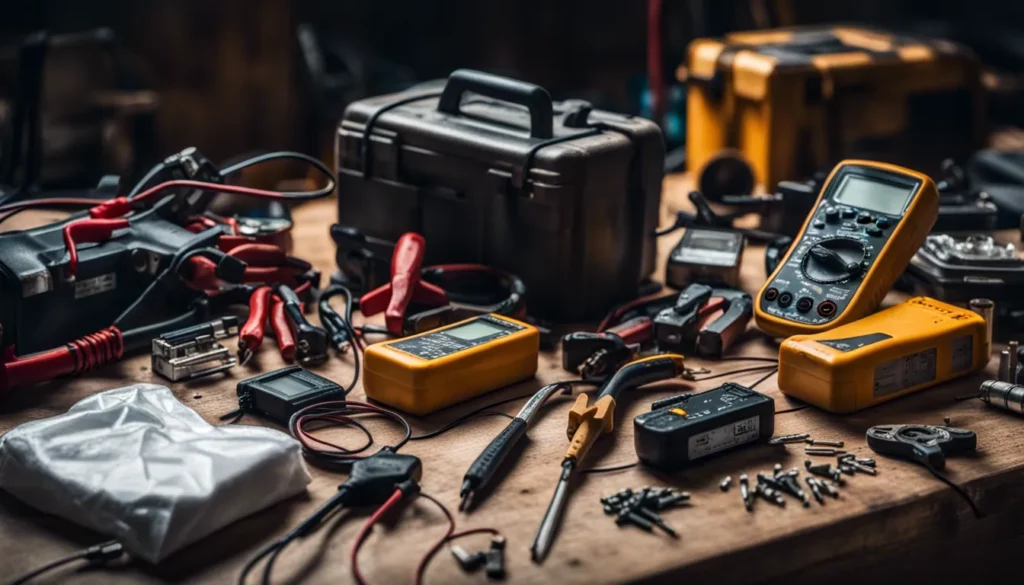
The first step to rejuvenate old batteries is assessment. Using a voltmeter, check the battery’s voltage:
- A reading between 12.6 and 12.8 volts indicates a healthy battery.
- Readings between 10.5 and 12 volts suggest the battery is a good candidate for reconditioning.
- Batteries reading below 10.5 volts can still be reconditioned but have a lower success rate.
The most effective reconditioning method uses an Epsom salt solution.
The process begins with carefully removing the old battery acid and cleaning the terminals.
Next, a solution of Epsom salt and distilled water (8 ounces per quart) is prepared and added to the battery cells. This solution helps break down sulfate deposits and restore proper electrolyte function.
The charging process is crucial and must be done correctly.
A slow charge at 2 amps for 24-36 hours typically yields the best results.
Higher charging rates can damage the battery and reduce the effectiveness of the reconditioning process.
The Solar Method
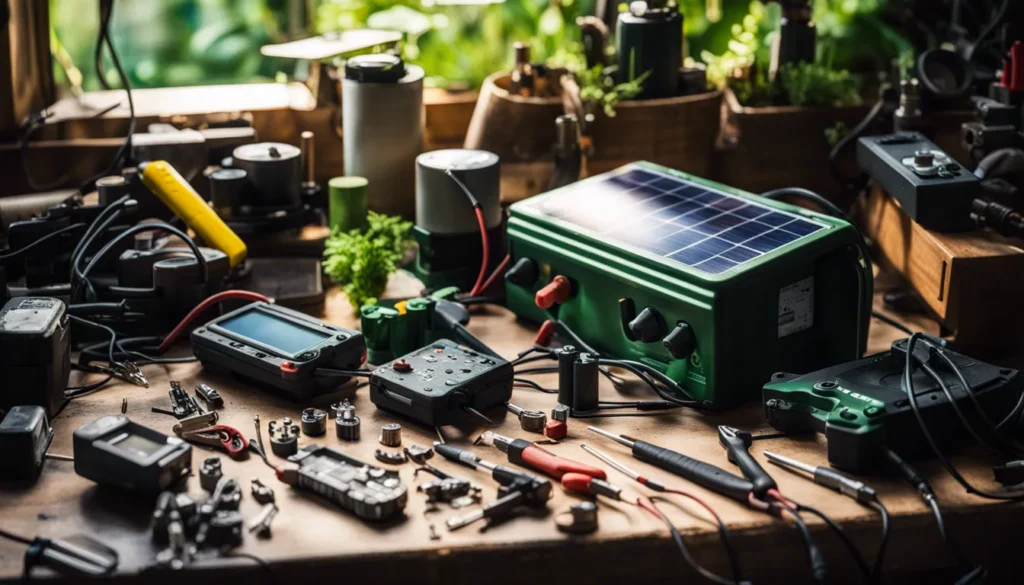
The Solar Method is a unique approach to prolong battery lifespan, particularly those that are deeply discharged or used in off-grid solar systems.
Instead of relying on standard reconditioning tools, this technique uses a steady, low-level charge from a solar panel, typically around 40 watts, to gradually restore the battery’s capacity.
By connecting the panel directly to the battery and leaving it in place for one to two weeks, this method provides a slow and consistent charge that can revive batteries that might otherwise seem beyond saving.
The extended charge time allows the battery to absorb energy at a natural pace, giving the internal components the chance to stabilize and regain functionality. This is especially beneficial for batteries that have been left unused for long periods or have deeply discharged to the point where conventional methods fall short.
While patience is key, the results can be well worth the wait, often leading to a fully restored battery with improved performance and longevity.
Using solar power for reconditioning not only harnesses renewable energy but also reduces the need for specialized equipment, making it an accessible method for those already using solar setups.
For anyone involved in sustainable practices or off-grid living, the solar method is both practical and eco-friendly, breathing new life into batteries that are integral to energy storage and minimizing waste in the process.

Cut Your Power Bills By 65%!
The simplest, easiest-to-use A to Z blueprint that anyone can follow to make their own cheap green electricity.
Success Rates and Expectations
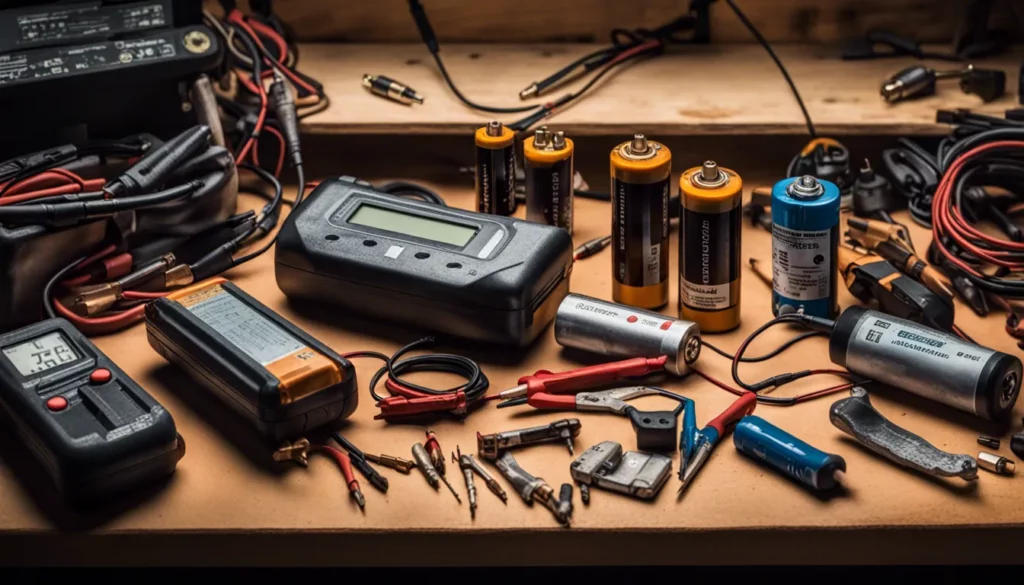
Based on documented cases and industry research, battery reconditioning has varying success rates depending on several factors:
- Car batteries typically show a 70-80% success rate when reconditioned before reaching critical degradation.
- Deep cycle batteries used in solar systems often achieve even higher success rates, particularly when using the solar reconditioning method.
- The capacity of reconditioned batteries usually returns to 70-90% of their original specification.
Alternative Battery Reconditioning Methods Using Chemical Solutions
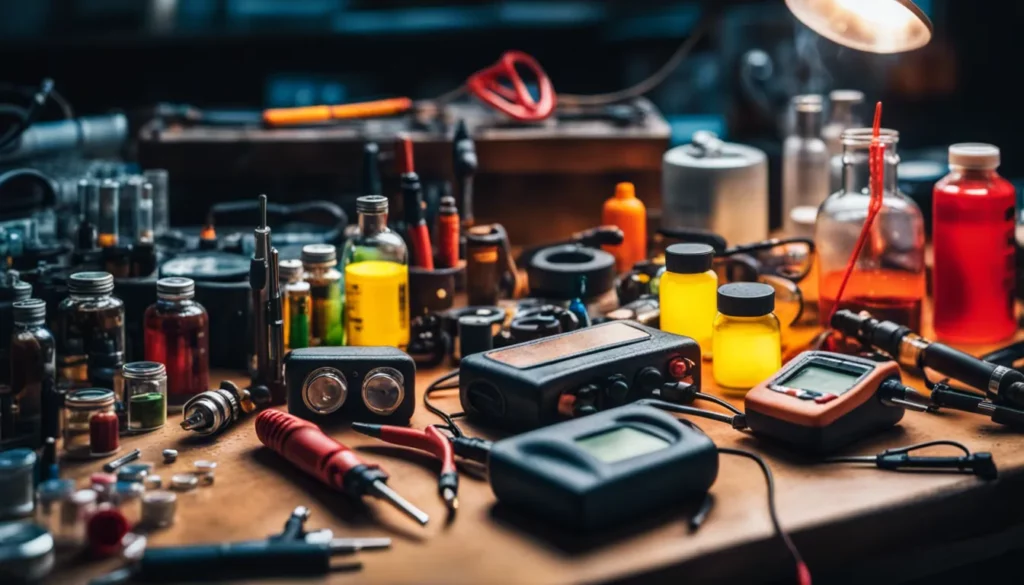
For those who enjoy experimenting with DIY repairs, chemical solutions offer a different angle on reviving dead batteries, targeting issues like sulfation, corrosion, and overall capacity decline.
Some try creating chemical mixes that help restore battery functionality, though each approach has its own level of risk and effectiveness.
One method involves an aluminum sulfate solution to boost a battery’s performance.
By dissolving a pound of aluminum sulfate into a gallon of boiling distilled water until the mixture is completely clear, you create a solution that can enhance the charging speed and output.
While this mixture might help restore some life to the battery, it’s important to remember that it doesn’t provide a permanent fix.
Copper sulfate is another chemical option that can be used to aid in desulfation, although it’s generally less effective than Epsom salt.
More advanced DIYers sometimes opt for an EDTA solution to extend battery life, a stronger agent designed to dissolve stubborn lead sulfate crystals that accumulate inside lead-acid batteries.
However, EDTA requires careful handling, as it’s highly potent and can be hazardous if not used properly.
While these chemical treatments can offer a temporary boost to old or failing batteries, the improvements may not last.
Many DIYers find that combining conventional reconditioning techniques with select chemical treatments provides the most reliable results.
Battery Maintenance After Reconditioning
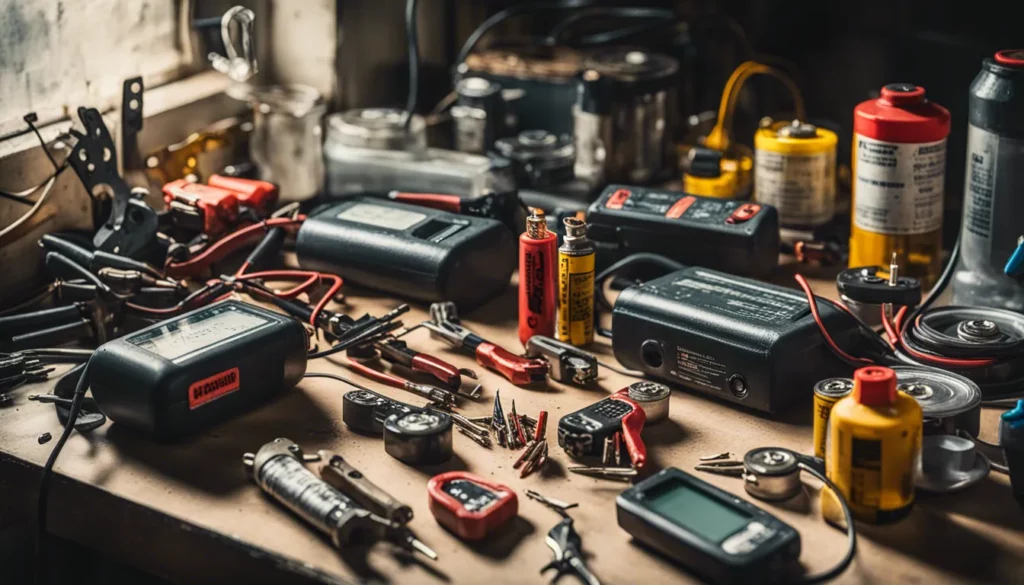
Proper maintenance significantly extends the life of reconditioned batteries. Regular voltage checks help identify potential issues before they become serious.
Keeping terminals clean and using a trickle charger during long storage periods prevents sulfation and maintains battery health.
Limitations and When to Replace
Despite its effectiveness, battery reconditioning isn’t always successful. Batteries with physical damage, severe internal corrosion, or those that have been completely discharged for extended periods may not respond to reconditioning.
Additionally, after multiple reconditioning attempts, some batteries may still fail to hold a charge, indicating the need for replacement.
Economic Benefits of Battery Reconditioning
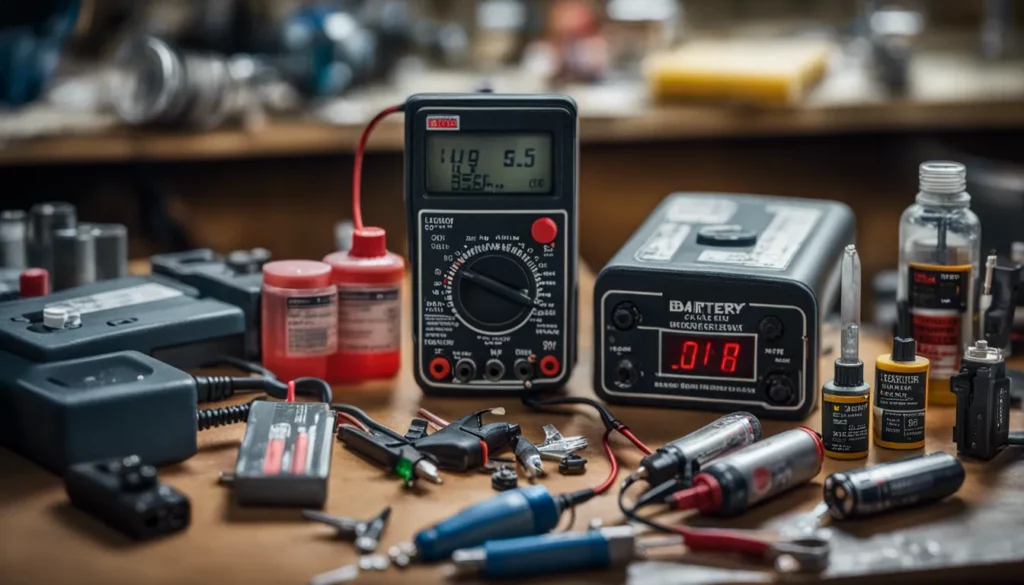
Battery reconditioning offers impressive savings potential, especially considering how inexpensive the initial setup can be.
With around $50 for essential tools and materials, anyone can get started on reconditioning, and the payoff can be substantial.
Just reconditioning a single car battery can offset the entire cost of supplies, essentially making everything else you recondition a bonus in terms of savings.
Imagine not having to replace expensive car, boat, or even solar system batteries as often; each successful reconditioning gives these batteries extended life, delaying or even avoiding costly replacements.
For people who use batteries regularly — whether for vehicles, off-grid power setups, or backup power solutions — the cost benefits are especially valuable.
Over time, consistently reconditioning batteries instead of replacing them adds up to potentially hundreds or even thousands of dollars saved.
Environmental Impact
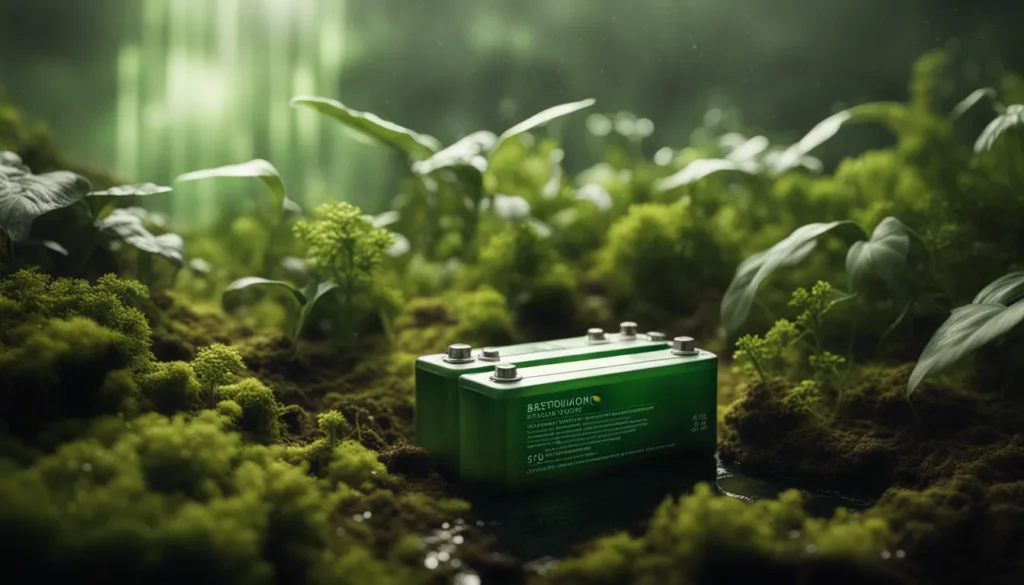
Battery reconditioning has a great positive impact on the environment, considering how much waste it prevents.
Every reconditioned battery means roughly 20 pounds of lead and other hazardous materials are kept from ending up in landfills or polluting soil and water.
It’s a small step, but one that adds up fast, especially when considering how many batteries we go through in our lifetime.
This process also reduces the need for new batteries to be manufactured.
Producing batteries involves a lot of raw material extraction and consumes large amounts of energy.
Mining for lead, nickel, and other metals used in batteries is often destructive to local ecosystems, and the manufacturing process itself releases greenhouse gases and other pollutants.
By extending the life of batteries already in circulation, reconditioning reduces the demand for new production, helping cut back on both the environmental and resource costs associated with battery manufacturing.
Battery reconditioning, then, is more than just a way to save money; it’s an action that aligns with sustainable living.
Every time you recondition a battery instead of buying a new one, you’re making a small, tangible choice that contributes to a larger positive environmental impact.
Conclusion
While this guide provides a solid foundation for understanding battery reconditioning, many readers might wonder how to put these concepts into practice effectively.
The techniques we’ve discussed require attention to detail and proper guidance to master safely and successfully.
If you’re intrigued by the potential savings and environmental benefits of battery reconditioning, you might be wondering about the best way to get started.
This is where the EZ Battery Reconditioning guide comes in.
This comprehensive program has helped thousands of people master the art of battery reconditioning, teaching you step-by-step how to breathe new life into virtually any type of old battery.
From car batteries to laptop batteries, the guide breaks down complex processes into simple, actionable steps anyone can follow.
What makes this guide particularly valuable is its focus on safety and effectiveness.
Rather than learning through trial and error (which can be costly and potentially dangerous), you get access to proven methods developed through years of experience.
The program has helped countless individuals save hundreds, even thousands of dollars on battery replacements while contributing to environmental conservation.
Ready to transform your dead batteries into like-new power sources? Check out the EZ Battery Reconditioning guide and discover how easy it can be to master this money-saving skill.

